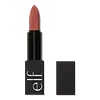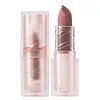What's inside
What's inside
 Key Ingredients
Key Ingredients

 Benefits
Benefits

 Concerns
Concerns

 Ingredients Side-by-side
Ingredients Side-by-side

Polyglyceryl-2 Triisostearate
EmulsifyingEthylhexyl Palmitate
EmollientBis-Diglyceryl Polyacyladipate-2
EmollientSynthetic Wax
AbrasiveSilica
AbrasiveEuphorbia Cerifera Wax
Squalane
EmollientIsononyl Isononanoate
EmollientJojoba Esters
EmollientCaprylic/Capric Triglyceride
MaskingHydrogenated Polycyclopentadiene
Microcrystalline Wax
Emulsion StabilisingOryza Sativa Starch
AbsorbentHelianthus Annuus Seed Wax
Skin ConditioningSclerocarya Birrea Seed Oil
HumectantTocopheryl Acetate
AntioxidantParfum
MaskingMica
Cosmetic ColorantPhenoxyethanol
PreservativeStearalkonium Hectorite
Gel FormingCaprylyl Glycol
EmollientAcacia Decurrens Flower Wax
EmollientPolyhydroxystearic Acid
EmulsifyingLecithin
EmollientPolyglycerin-3
HumectantPropylene Carbonate
SolventPolyglyceryl-3 Polyricinoleate
EmulsifyingIsostearic Acid
CleansingIsopropyl Myristate
EmollientTriethoxycaprylylsilane
CI 77891
Cosmetic ColorantCI 77491
Cosmetic ColorantCI 77492
Cosmetic ColorantCI 77499
Cosmetic ColorantCI 15850
Cosmetic ColorantCI 42090
Cosmetic ColorantPolyglyceryl-2 Triisostearate, Ethylhexyl Palmitate, Bis-Diglyceryl Polyacyladipate-2, Synthetic Wax, Silica, Euphorbia Cerifera Wax, Squalane, Isononyl Isononanoate, Jojoba Esters, Caprylic/Capric Triglyceride, Hydrogenated Polycyclopentadiene, Microcrystalline Wax, Oryza Sativa Starch, Helianthus Annuus Seed Wax, Sclerocarya Birrea Seed Oil, Tocopheryl Acetate, Parfum, Mica, Phenoxyethanol, Stearalkonium Hectorite, Caprylyl Glycol, Acacia Decurrens Flower Wax, Polyhydroxystearic Acid, Lecithin, Polyglycerin-3, Propylene Carbonate, Polyglyceryl-3 Polyricinoleate, Isostearic Acid, Isopropyl Myristate, Triethoxycaprylylsilane, CI 77891, CI 77491, CI 77492, CI 77499, CI 15850, CI 42090
Dimethicone
EmollientCaprylic/Capric Triglyceride
MaskingSilica
AbrasivePolyglyceryl-2 Triisostearate
EmulsifyingSynthetic Wax
AbrasiveCeresin
Emulsion StabilisingTitanium Dioxide
Cosmetic ColorantVinyl Dimethicone/Methicone Silsesquioxane Crosspolymer
CI 77491
Cosmetic ColorantDimethicone/Vinyl Dimethicone Crosspolymer
Skin ConditioningEthylene/Propylene Copolymer
AbrasivePolyhydroxystearic Acid
EmulsifyingCI 77499
Cosmetic ColorantTocopheryl Acetate
AntioxidantGlyceryl Caprylate
EmollientTriethoxycaprylylsilane
Ethylhexylglycerin
Skin ConditioningParfum
MaskingCI 15850
Cosmetic ColorantTocopherol
AntioxidantDimethicone, Caprylic/Capric Triglyceride, Silica, Polyglyceryl-2 Triisostearate, Synthetic Wax, Ceresin, Titanium Dioxide, Vinyl Dimethicone/Methicone Silsesquioxane Crosspolymer, CI 77491, Dimethicone/Vinyl Dimethicone Crosspolymer, Ethylene/Propylene Copolymer, Polyhydroxystearic Acid, CI 77499, Tocopheryl Acetate, Glyceryl Caprylate, Triethoxycaprylylsilane, Ethylhexylglycerin, Parfum, CI 15850, Tocopherol
Ingredients Explained
These ingredients are found in both products.
Ingredients higher up in an ingredient list are typically present in a larger amount.
This ingredient is an emollient, solvent, and texture enhancer. It is considered a skin-softener by helping the skin prevent moisture loss.
It helps thicken a product's formula and makes it easier to spread by dissolving clumping compounds.
Caprylic Triglyceride is made by combining glycerin with coconut oil, forming a clear liquid.
While there is an assumption Caprylic Triglyceride can clog pores due to it being derived from coconut oil, there is no research supporting this.
Learn more about Caprylic/Capric TriglycerideCi 15850 is the pigment color red. It is an azo dye and created synthetically.
Azo dyes need to be thoroughly purified before use. This allows them to be more stable and longer-lasting.
This ingredient is common in foundations, lipsticks, and blushes. This color is described as brown/orangey red.
It has many secondary names such as Red 6 and Red 7. According to a manufacturer, Red 6 usually contains aluminum.
Learn more about CI 15850Ci 77491 is also hydrated iron III oxide. It's sole purpose is to give a red/pink hue to products.
Iron III oxides are classified as inorganic chemicals for coloring.
Synthetically created Ci 77491 is considered safer than those naturally found. This is because the synthetically created version may contain less impurities. Iron oxides are generally non-toxic and non-allergenic.
Learn more about CI 77491Ci 77499 is also hydrated iron III oxide. It is created from mixing red and black iron oxides. This helps give shades of darkness to a product.
Iron III oxides are classified as inorganic chemicals for coloring.
Parfum is a catch-all term for an ingredient or more that is used to give a scent to products.
Also called "fragrance", this ingredient can be a blend of hundreds of chemicals or plant oils. This means every product with "fragrance" or "parfum" in the ingredients list is a different mixture.
For instance, Habanolide is a proprietary trade name for a specific aroma chemical. When used as a fragrance ingredient in cosmetics, most aroma chemicals fall under the broad labeling category of “FRAGRANCE” or “PARFUM” according to EU and US regulations.
The term 'parfum' or 'fragrance' is not regulated in many countries. In many cases, it is up to the brand to define this term.
For instance, many brands choose to label themselves as "fragrance-free" because they are not using synthetic fragrances. However, their products may still contain ingredients such as essential oils that are considered a fragrance by INCI standards.
One example is Calendula flower extract. Calendula is an essential oil that still imparts a scent or 'fragrance'.
Depending on the blend, the ingredients in the mixture can cause allergies and sensitivities on the skin. Some ingredients that are known EU allergens include linalool and citronellol.
Parfum can also be used to mask or cover an unpleasant scent.
The bottom line is: not all fragrances/parfum/ingredients are created equally. If you are worried about fragrances, we recommend taking a closer look at an ingredient. And of course, we always recommend speaking with a professional.
Learn more about ParfumThis ingredient is a form of glycerin with emulsifying and emollient properties.
As an emulsifier, this ingredient helps keep products together while adding a thick texture. The manufacturer states this ingredient has emollient properties. Emollients help keep the skin hydrated by trapping moisture in.
Polyglyceryl-2 Triisostearate is created by reacting diglycerin and isostearic acid. Due to the isostearic acid base, it may not be safe for Malassezia or fungal acne.
Learn more about Polyglyceryl-2 TriisostearatePolyhydroxystearic Acid is a soft wax made from castor oil.
It is is a texture thickener, emulsifier, and film-former. Emulsifiers prevent ingredients from separating, such as oils and waters.
Polyhydroxystearic Acid may not be fungal acne safe.
Learn more about Polyhydroxystearic AcidSilica, also known as silicon dioxide, is a naturally occurring mineral. It is used as a fine, spherical, and porous powder in cosmetics.
Though it has exfoliant properties, the function of silica varies depending on the product.
The unique structure of silica enhances the spreadability and adds smoothness, making it a great texture enhancer.
It is also used as an active carrier, emulsifier, and mattifier due to its ability to absorb excess oil.
In some products, tiny microneedles called spicules are made from silica or hydrolyzed sponge. When you rub them in, they lightly polish away dead skin layers and enhance the penetration of active ingredients.
Learn more about SilicaSynthetic Wax is created from fossil fuels such as natural gas. It is used to enhance texture, adjust pH, and as an occlusive.
It may also be used as an abrasive ingredient to exfoliate the skin.
Synthetic Wax may not be fungal acne safe.
Learn more about Synthetic WaxTocopheryl Acetate is AKA Vitamin E. It is an antioxidant and protects your skin from free radicals. Free radicals damage the skin by breaking down collagen.
One study found using Tocopheryl Acetate with Vitamin C decreased the number of sunburned cells.
Tocopheryl Acetate is commonly found in both skincare and dietary supplements.
Learn more about Tocopheryl AcetateTriethoxycaprylylsilane is a silicone used to bind and stabilize ingredients.
As an emulsifier, it helps prevent ingredients from separating. This can help elongate the shelf life of products.
Triethoxycaprylylsilane is often used to coat mineral sunscreens ingredients to help give a better feel. It also helps reduce oxidative stress in sunscreens.
Learn more about Triethoxycaprylylsilane